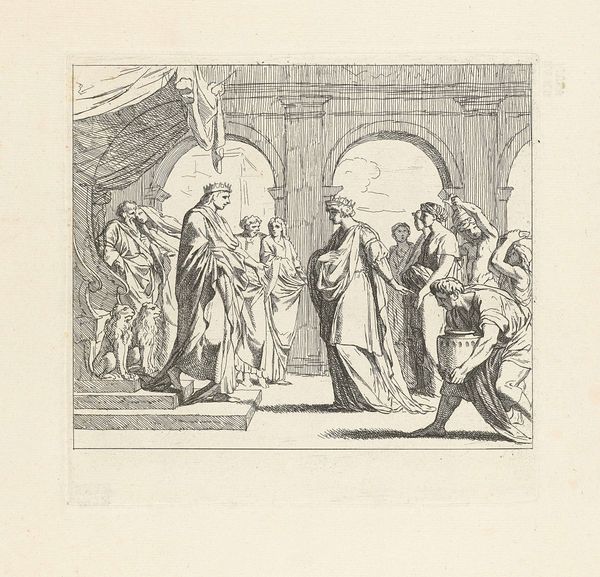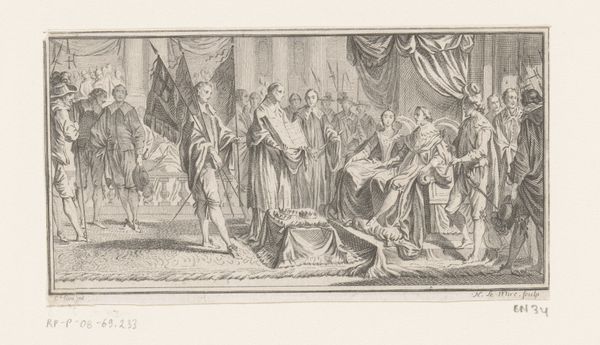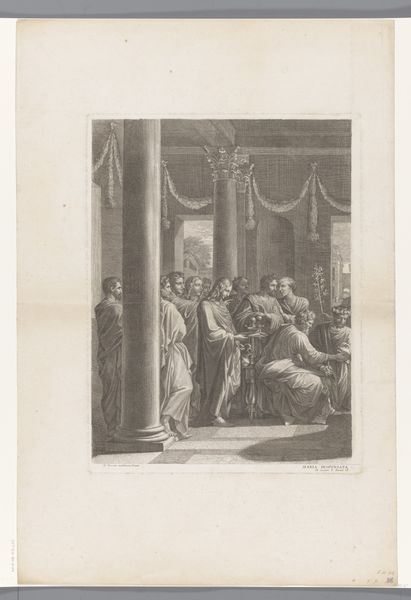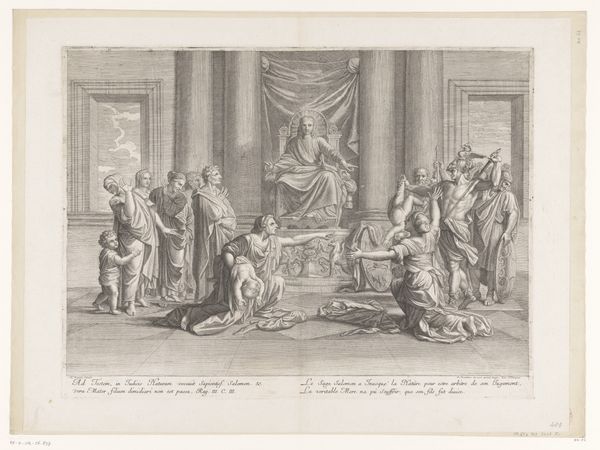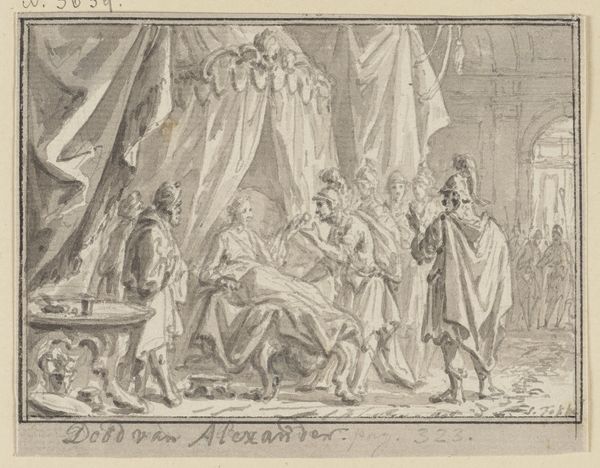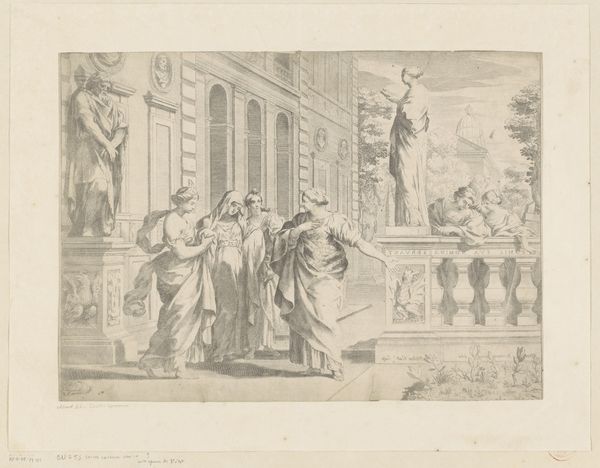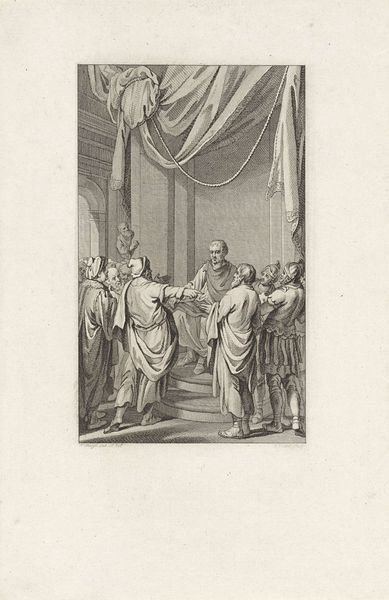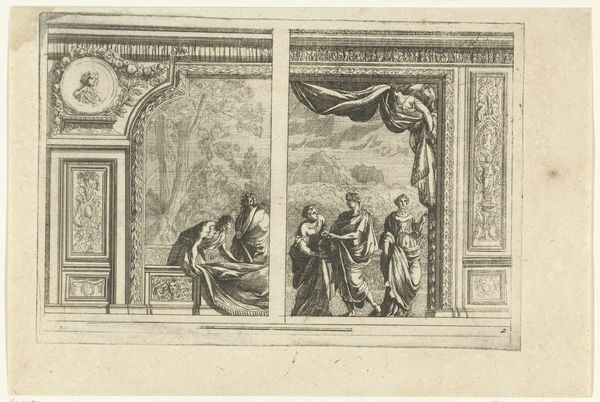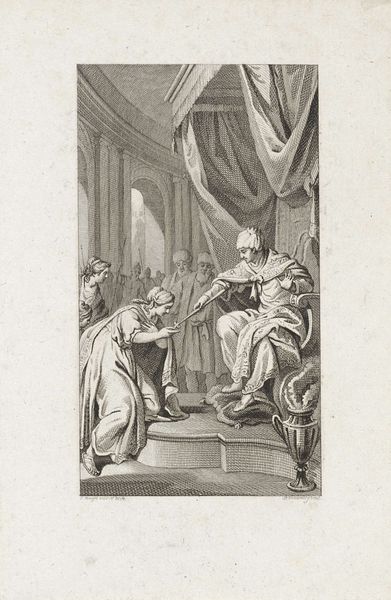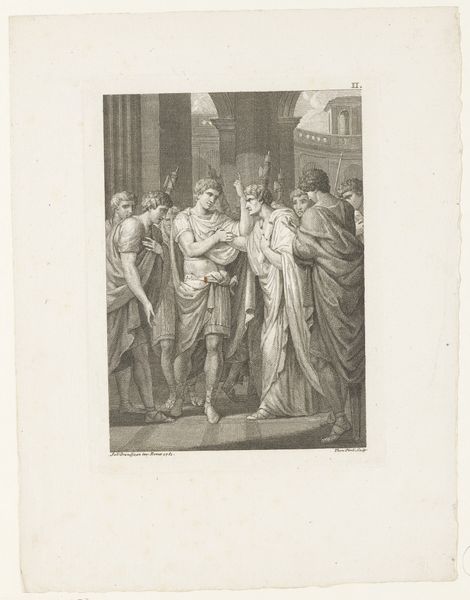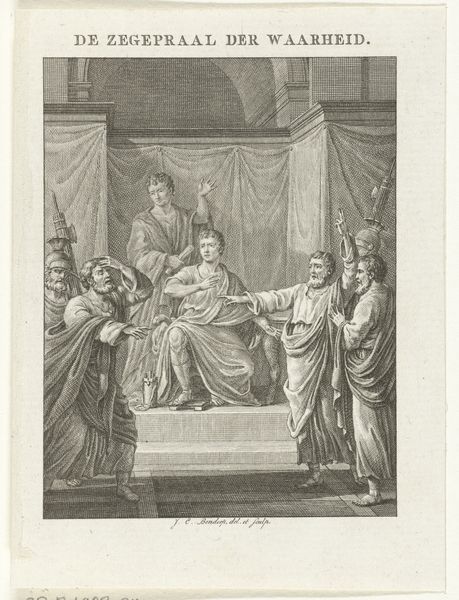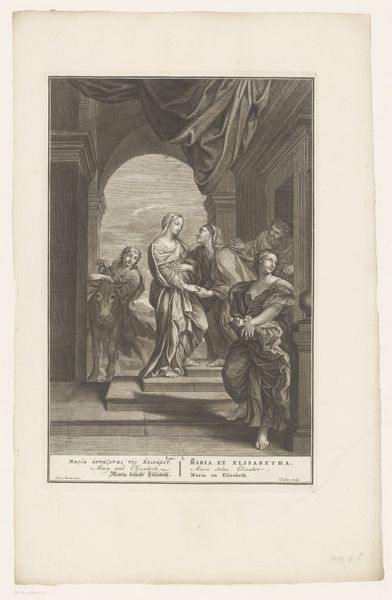
Frankrijk en de koning van Polen aanvaarden de onderwerping van Lorraine 1754 - 1759
0:00
0:00
noellemire
Rijksmuseum
engraving
#
narrative-art
#
baroque
#
history-painting
#
academic-art
#
engraving
Dimensions: height 78 mm, width 134 mm
Copyright: Rijks Museum: Open Domain
Editor: Here we have Noël Le Mire's engraving, "Frankrijk en de koning van Polen aanvaarden de onderwerping van Lorraine," created sometime between 1754 and 1759. It's incredibly detailed. The figures are draped in luxurious fabrics and set against the backdrop of what appears to be a royal palace. What historical narratives do you see playing out here? Curator: Well, at face value, it's an illustration of power dynamics, yes, but much more too. Consider the moment. Lorraine, caught between France and the Habsburg Empire, had been a strategic battleground for centuries. This print serves as political propaganda, visualizing and thus solidifying France's dominance. The kneeling figure presents the symbols of Lorraine, which accentuates France’s triumph and subtly communicates to its audience, both domestically and internationally, the reach of the French crown. It aims to create a sense of awe and respect. Editor: So the artwork's intended meaning is deeply rooted in contemporary socio-political power struggles? Is there something manipulative about it, as propaganda? Curator: Absolutely. Academic art in this era, with its clear narratives and idealized figures, frequently operated this way. Think about how these images were distributed – as prints they became accessible and reproducible, spreading the desired message far beyond the court. What impact does the print's style itself have on how that message is received, in your opinion? Editor: Hmm, the Baroque elements – the dramatic gestures, the detailed rendering – make the event seem more significant, maybe even divinely ordained. It feels like it elevates a political act into something more… eternal? Curator: Exactly! And think about the institutional context: Where was this print likely to be viewed? In albums celebrating the French monarchy? Displayed in homes of the well-to-do, reinforcing their loyalty? These factors actively shaped how the artwork was received. Editor: So, it's not just about what's depicted but how and where it was shown that really solidifies its historical importance? I see now it speaks volumes about 18th-century political communication and visual strategies. Curator: Precisely. Analyzing the interplay between the image, its creators, and its audience reveals the politics embedded within. Editor: Thanks, it changed the way I will see prints from this period now! Curator: My pleasure; hopefully you gained insights applicable to any type of imagery you may study from here on!
Comments
No comments
Be the first to comment and join the conversation on the ultimate creative platform.
